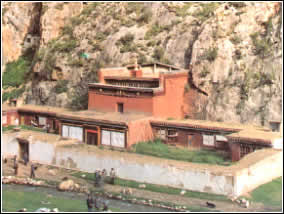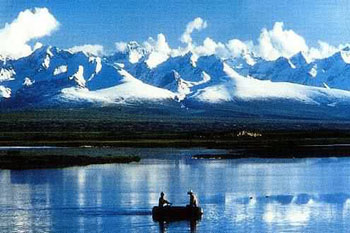search for a Trip
Yushu Guide
Introduction of Yushu
YuShu Tibetan Prefecture lies in the central of the Qing-Tibet plateau, on the north south boundary of Qinghai Province. The area of YuShu Borough is 267,000 square kilometers, which takes 37.2% of the total area of the Province. It lies at an average of 4000 meters above sea-level, and therefore has a very cold weather. The weather there is not distinguished as four seasons, but as cold days, which lasts 7 to 8 months a year, and warm days, which is only 4 to 5 months a year. The average temperature is -0.8 ℃, with the highest of -42℃ and lowest of 28℃. Also, there are so much disasters, like storm, frost, low temperature, drought and hail, which have greatly affected the local agriculture and animal husbandry.
Main attraction of Yushu
1. Mt. Alimaqin ( A'yemaqen )

The lofty A'nyemaqen Mountains is composed of 13 peaks, averaging 5,900 meters above sea level. Legend has it that there are many mountain gods, wise, kind-hearted, who protect the local people from evil spirits. Mt. A'nyemaqen is holding holy especially by the Tibetan people. A'nyemaqen is also attractive for its unique land formation, changeable climate, spectacular waterfalls, and various species of wild animals.
2. Mt. Niaobaoyuze

Also known as Guoluo, Nianbaoyuze Mountains is held holy by the locals on Guoluo Grassland. It is located 40 kilometers southwest of Jigzhi County, and is the main peak on the southeastern section of Mt. Bayan Har. It is said that the mountain is the birthplace of the local Tibetans. Nianbaoyuze is composed of many peaks 4,000 meters above sea level. The main peak is located in the southwestern monsoon zone, with an annual rainfall of 700mm, a place with the most rainfall in Qinghai. There are 360 lakes, which are famous for alepidotes. In the southeast, there are virgin forests of pines and firs. The ravines are home to snow leopards, brown dears, and lynxes. The weather here is changeable.
3. Temple of Princess Wencheng

Located 20 kilometers from Jiegu Town of Yushu Prefecture, the Temple of Princess Wencheng is hemmed in by mountains and streams. It is equisitely designed. On top of the rock over the front gate of the main hall there are nine statues of Buddha, displaying the excellent technique of carving and painting of the Tang Dynasty (618-907). It is said that when she passed through here on her way to marry the Tibetan king Songtsen Gampo, Princess Wencheng was deeply moved by the hospitable local Tibetans. She thus ordered her artisans and craftsmen to build Buddhist pagodas and make statues of Buddha. In 710 when she passed through the same place on her way to marry the Tibetan king Chide Zugdan, Princess Jincheng saw the statues of Buddha and asked her craftsmen to rebuild the temple, granting the name of the Temple.
China Attractions Guide
- Anhui Attractions
- Beijing Attractions
- Chongqing Attractions
- Fujian Attractions
- Gansu Attractions
- Guangdong Attractions
- Guangxi Attractions
- Guizhou Attractions
- Hainan Attractions
- Henan Attractions
- Hongkong Attractions
- Hubei Attractions
- Hunan Attractions
- Inner Mongolia Attractions
- Jiangsu Attractions
- Jiangxi Attractions
- Manchuria Attractions
- Ningxia Attractions
- Qinghai Attractions
- Shaanxi Attractions


